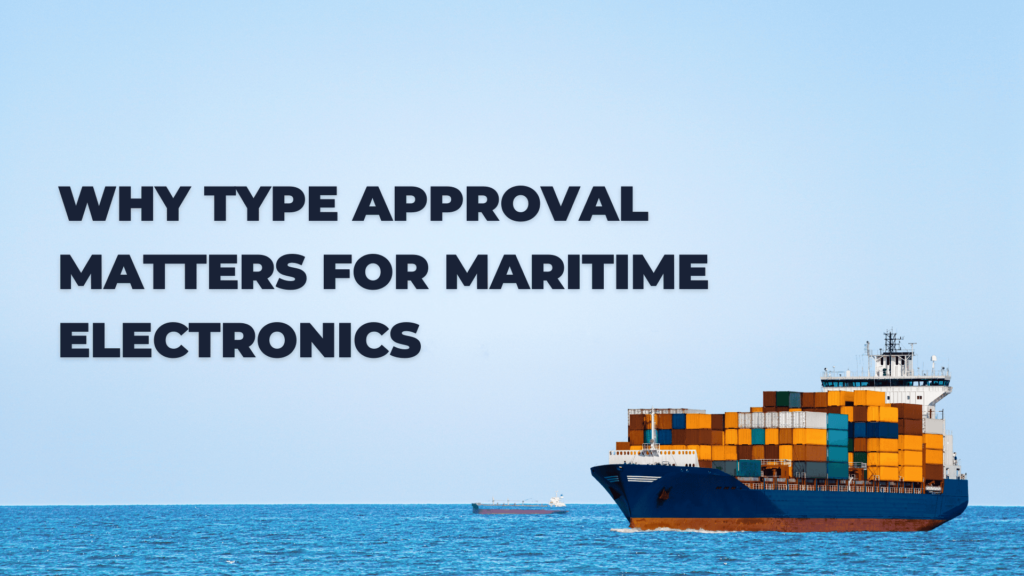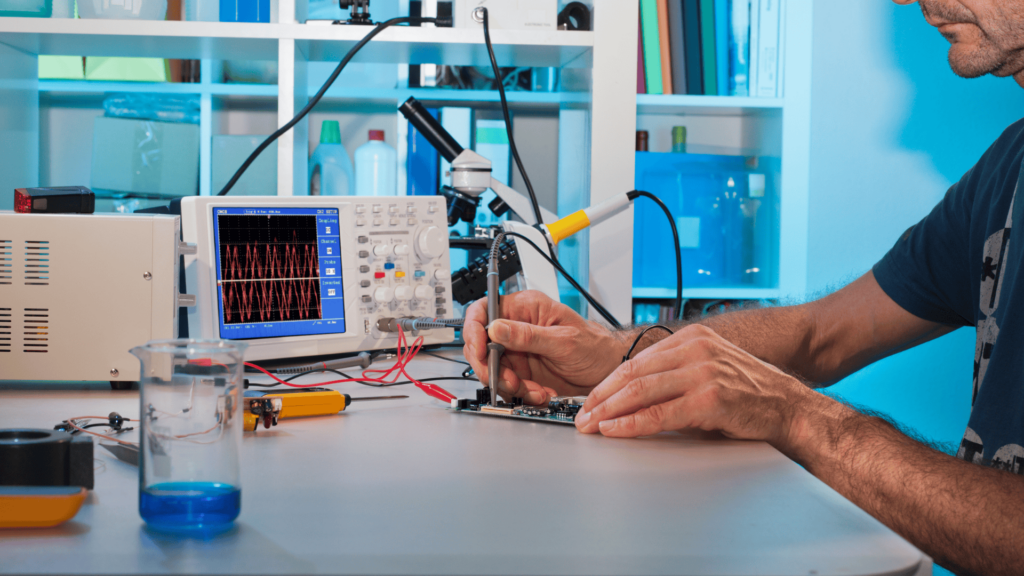Overcoming challenges in smart agriculture using IoT
September 18, 2024
Table of contents
The agriculture industry has seen a remarkable transformation in recent years, with technology playing an increasingly vital role. The rise of smart agriculture using IoT (Internet of Things) is providing farmers with more control over their operations than ever before.
Through IoT-enabled devices, farmers can now collect real-time data on environmental conditions, monitor equipment performance, and make data-driven decisions that improve both crop cultivation and livestock management.
This shift is transforming traditional farming methods, leading to better resource management and higher productivity. However, the path to fully adopting IoT in agriculture comes with several challenges.
Let’s explore these key obstacles and practical solutions to help farmers successfully integrate IoT into their operations.
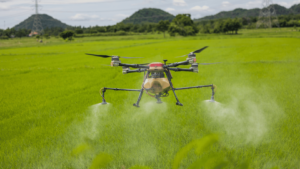
Connectivity Challenges in Remote Areas
lack of reliable internet access in rural locations. IoT devices require constant, stable connections to transmit data in real time, which is often difficult in remote farming regions with limited cellular or broadband coverage.
To address this, farmers can use Low-Power Wide-Area Networks (LPWAN) like LoRaWAN and Sigfox. These networks provide long-range communication while consuming minimal power, making them ideal for remote areas. LoRaWAN networks, for example, can cover distances of up to 15 kilometers in rural areas, enabling IoT devices to communicate effectively even in remote locations.
Another solution is to utilize satellite connectivity. Companies like Swarm Technologies and Inmarsat provide satellite-based IoT solutions that offer global coverage, ensuring that even the most isolated farms can maintain a stable connection. Although satellite connectivity can be more expensive, it provides a reliable alternative when traditional network coverage is unavailable.
Managing High Initial Costs
For many small-scale farmers, the initial cost of adopting IoT technology can be a significant barrier. The upfront expenses for devices, network setups, and data service subscriptions can add up, and the return on investment (ROI) isn’t always immediately clear.
To mitigate the financial burden, farmers can explore government subsidies and grants aimed at promoting smart agriculture. Many governments offer financial incentives to encourage the use of IoT in agriculture as part of broader efforts to enhance food security and sustainability.
Additionally, adopting scalable IoT solutions can help manage costs. Instead of implementing a full-scale IoT system from the outset, farmers can start with a smaller, more affordable setup and gradually expand as they see the benefits. Modular platforms like Kaa IoT or ThingSpeak let farmers build their IoT systems gradually.
Addressing Data Security Risks
Data security and privacy concerns have also grown with the increasing use of IoT devices. Farms collect vast amounts of sensitive information through IoT systems, making them potential targets for cyberattacks.
To protect their data against cyber threats, it is crucial to implement strong encryption protocols such as Advanced Encryption Standard (AES) to provide a high level of security for IoT data.
Furthermore, they can also adopt secure IoT platforms like AWS IoT Core or Microsoft Azure IoT Hub, which offer built-in security features such as device authentication, data encryption, and regular updates to prevent vulnerabilities.
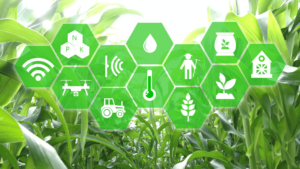
Simplifying Data Integration and Management
Farming with IoT generates massive amounts of data from sensors, weather stations, and monitoring devices. Managing and integrating this data into a coherent system can be overwhelming, particularly for farmers without technical expertise. Additionally, the data collected by IoT devices often comes in different formats, making it difficult to analyze and derive actionable insights.
To manage large volumes of data, farmers can use IoT data management platforms such as IBM Watson IoT or Google Cloud IoT Core. These platforms centralize data from various sources, providing easy-to-understand visualizations and insights.
Integrating Artificial Intelligence (AI) with IoT data management can further enhance data analysis. AI algorithms can process complex datasets and identify patterns or trends that might not be immediately apparent. For example, AI-driven platforms like TensorFlow can analyze crop health data to predict potential diseases or optimize irrigation schedules based on weather forecasts.
Bridging the Knowledge Gap
The adoption of IoT in agriculture requires a certain level of technical expertise to install, operate, and maintain IoT systems. Many farmers, especially those from older generations, may lack the technical know-how to fully utilize these technologies. This gap can hinder the adoption of IoT solutions.
Training programs tailored to farmers are essential for bridging this knowledge gap. Organizations can partner with technology providers to offer workshops and hands-on training in IoT setup and data interpretation.
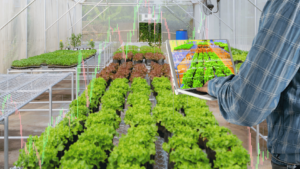
Additionally, some IoT companies offer managed services that handle the installation, maintenance, and monitoring of IoT systems. This allows farmers to benefit from IoT technology without needing to become experts themselves. For example, companies like Farmobile and CropX provide turnkey solutions that include ongoing support, ensuring that farmers can focus on their core activities while leveraging the benefits of IoT.
Overcoming Interoperability Issues
Another challenge in smart agriculture using IoT is the lack of standardization across devices. This lack of standardization in the IoT industry can lead to interoperability issues, where manufacturers often use incompatible systems, making it hard to create a unified IoT network.
To address interoperability challenges, farmers should prioritize IoT devices and platforms that adhere to open standards such as MQTT (Message Queuing Telemetry Transport) or CoAP (Constrained Application Protocol). These standards facilitate communication between devices from different manufacturers, ensuring that they can work together within the same system.
In addition, adopting an IoT ecosystem that supports a wide range of devices and services can simplify integration. Platforms like ThingWorx or Bosch IoT Suite offer extensive compatibility with various IoT devices, making it easier to build a unified system. These ecosystems also provide APIs and SDKs that enable developers to customize and extend the functionality of the IoT system according to the farm’s specific needs.
Collaborating for IoT implementation
Agriculture equipment manufacturers looking to integrate IoT solutions into their products can explore several key sources for collaboration with IoT specialists.
Partnering with IoT development firms specializing in industrial applications can provide tailored solutions for machinery, enhancing capabilities like remote monitoring, predictive maintenance, and automation.
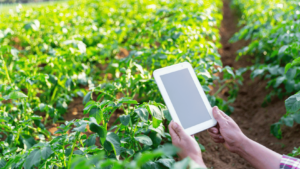
Another source to consider are academic institutions and research organizations specializing in smart agriculture, often working on the cutting edge of IoT innovation. By partnering with these sources, agricultural equipment manufacturers can access the expertise necessary to successfully implement IoT solutions and deliver enhanced value to their customers.
Additionally, specialized IoT consultancies such as EKTOS Development, also offer valuable expertise, helping manufacturers design, implement, and scale IoT systems that meet the specific needs of agricultural equipment.
Conclusion
Adopting smart agriculture using IoT is not without its challenges—connectivity, high costs, and data security are just a few.
However, by utilizing scalable solutions, securing networks, and providing ongoing training, these obstacles can be effectively overcome.
As IoT technology continues to evolve, its ability to transform farming practices will only increase, driving productivity and sustainability.
At EKTOS, we specialize in developing custom IoT solutions tailored to the unique needs of the agricultural sector. Our goal is to create cost-effective solutions that tackle these challenges head-on, so you can focus on what matters most—empowering farmers and maximizing the benefits of smart agriculture.




